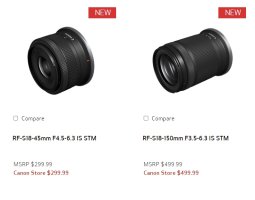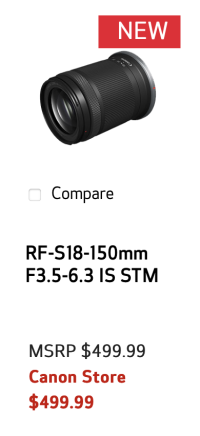The R7 has an SCN setting on the mode dial, consistent with it being more a 90D successor than a 7DII successor.
As I've been predicting for well over a year, the R7 is a little bit of both that is somewhere between the two. Rudy Winston said the same thing last week.
Canon named it the R7 because they see it as fitting in the same market segment as the 7D Mark II did, just as they named the R5 and R6 to communicate that those cameras fit the same market space as the 5D Mark IV and 6D Mark II before them did.
Canon bases model names on market segments, not specs. They always have and probably always will.
You can continue to deny the obvious if you wish to continue making a fool out of yourself.
The 90D only had a 120,000 actuation shutter rating and one memory card. It had an intentionally downgrade AF system from the top APS-C AF system in the 7D Mark II. It had a smaller viewfinder than the 7D Mark II. The 90D, introduced in 2019, only has an USB 2 interface. The 90D has a polycarbonate body.
The R7 has a 200,000 shutter rating (just as the 7D Mark II did). The R7 has two memory card slots. By all reports it has the same AF software as the R3 and sensor pixel density, which contributes to DPAF performance, that is higher than the R5. It has a larger VF than the 7D Mark II, not to mention the smaller 90D VF. The R7 has an USB 3.2 interface, compared to the USB 3 interface the 7D Mark II, introduced in 2014, has. The R7 has a body made of magnesium alloy and engineering plastics. This slots it between the magnesium alloy body of the 7D Mark II (though there were external parts of the 7D Mark II body that were plastic, like the pop-up flash cover) and the polycarbonate body of the 90D.
Yes, the narrower baseline of APS-C will always result in slightly lower AF performance than FF cameras with the same level of hardware and software. But the 90D also had downgraded software and hardware compared to the 7D Mark II, which had the same software and very similar hardware, other than the narrower baseline, as the 5D Mark III and the 1D X that were both current when the 7D Mark II was introduced.
The 90D and 7D Mark II only had two continuous shooting speeds, the R7 has three, similar to the higher tier 5D Mark IV.
The R7, at $1,499, is priced exactly between the introductory prices of the 7D Mark II ($1,799) and the 90D ($1,199).


